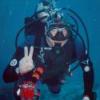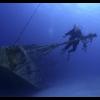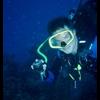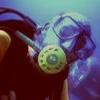Well that is why we educate ourselves and make informed decisions. I don't like to go on -- my buddy/instructor/mom told me so -- so it must be true.I will say this...I got a 'cave fill' to 3600 psi in a tank last year on our annual Florida trip and it blew an o-ring in my first stage out. It ruined my dive...could have seriously hurt me if it had happened in the water and it almost ruined my second dive of the day. (I had to use borrowed gear which is never a preferred way of diving!) So in my book...serious overfills are not safe and they are not desired. I like my gear just as it is WAY too much to risk losing it over an 'overfill'.
I'd rather carry a bigger tank or a safety stage if I am worried about having enough air/gas to dive with.
That said -- I don't know that you can really blame the o-ring failure on the high pressure fill. It was likely a coincidence. O-rings go when they go. And it could happen at 2640 as well as at 3600. You don't use special regulators for HP tanks and LP tanks -- other than DIN instead of yoke on HP of course - but the innards past that are the same.
The regs had just been serviced for the trip and they are rated for 3000 psi. So 10% over that is 3300. I had a fill of 3600 and it was clearly the fill issue. When I took it in for servicing I was told that I must of had a overfilled tank as it blew the main body o-ring that seals around the shaft of the piston.
I do dive older regs but even newer regs are only slightly more capable of handling higher pressures but they are not rated that way for liability purposes.
Depending on the age of your "older" regs, there can be a pretty significant difference in their ability to handle higher pressures. Do you use "DIN"?
O-rings don't only "go when they go"... having an unequal pressure applied to the "sealing surfaces" can cause an o-ring to blow or extrude through even the tiniest of spaces. I had a neck o-ring extrude when a buddy picked up my cylinder from hydro and filled it without making sure the valve was secure in the tank. Brand new o-ring... bad application.




















